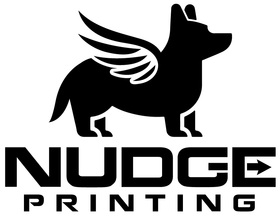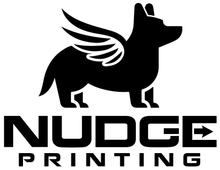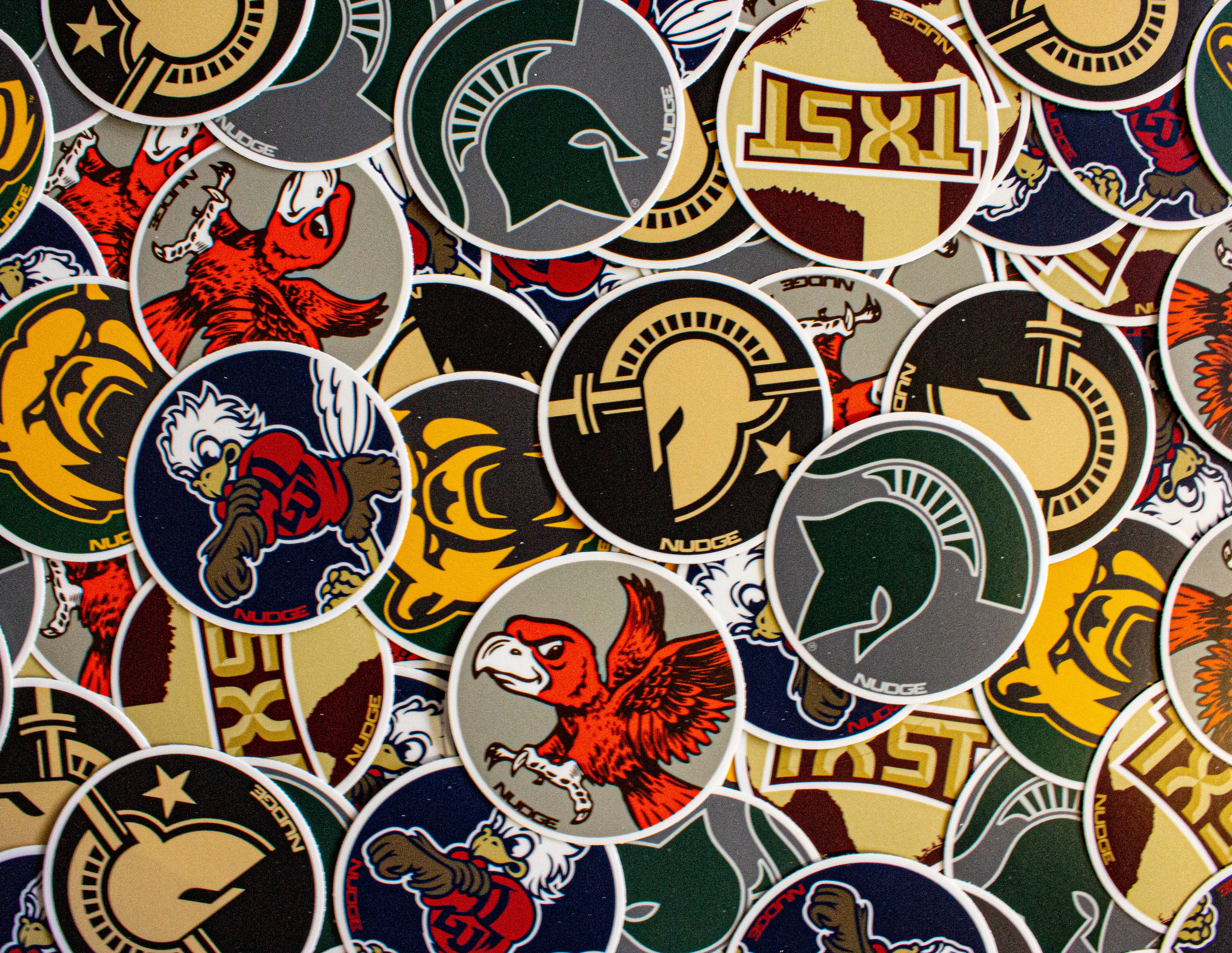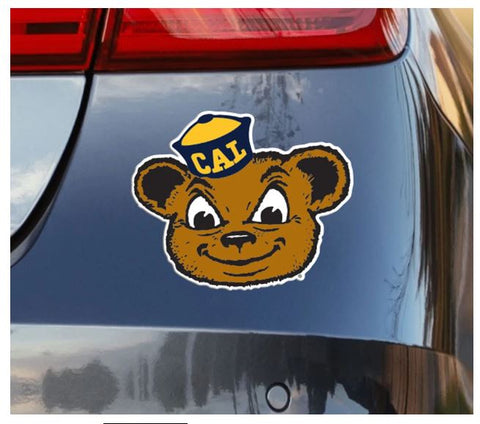When I started working for Nudge, I had grand dreams of being the next Nike or Adidas. I was designing anything that popped into my head, convinced that people will love everything I do and it's just a matter of the university giving us the green light. Items would fly off the shelves - it's easy, people love their university and always need gifts for others, right?
Wrong.
My eyes opened very quickly after a few weeks on the job and learning the ins-and-outs of the licensing and trademark industry. There are quite a few intricate steps and third-party vendors to contact before you can even begin the design process, and even then, any design that isn't in their style guide is a total gamble.
How does getting licensed work? It's easy on paper, but there's a lot more to it than what appears on paper.
On paper: Select a college or university that fits your business model well, based on location, enrollment, athletic success, and corresponding fees. Design a few items (since we do decals and t-shirts, we'll design three or four decals and a t-shirt or two depending on the availability of alternate logos and phrases, etc), send them off to the clearinghouse, get approved, and you're off!
What is a license? A license is permission from the college or university to use their logos, trademarks, phrases, or color scheme on apparel or other merchandise. But a one-size license does not fit all products, either. There are different licenses for t-shirts and hoodies as well as car decals and bumper stickers.
How do you get a license? It varies based on the university, but we apply through a third-party that acts on the school's behalf to approve design work. The volume of applications have increased dramatically with increased access to design and artwork tools, so most larger universities outsource their approval work to the third-party rather than inundate an athletic or marketing department employee with licensing requests. Some colleges do it all in-house, making the process slightly easier because we have direct contact to brand guidelines and style guides. An application consists of sending design work and proving to the university how that product would be sold and distributed. Below is an example from the Collegiate Licensing Company, one of the third parties we work with for applications, and you can learn more at clc.com. 
How do you get approved? Long story short: be different and don't submit bad products. I've written a few blogs previously about what sets our shirts apart from the competition, but that's a small piece of the puzzle. Marketing, shipping infrastructure, and design work also play a role. For example, if you search "Baylor University Apparel" on Amazon, the vast majority of shirts and sweatshirts that you'll see are Baylor wordmarks with the interlocking BU on green, yellow, white, or gray shirts. We are the only alternate logo on the first page of the search results, and that helps separate us from the competition. With access to design tools and printing mechanisms, it is easier than ever to print merchandise, so everyone and their sister can submit a design and a product list. Sticking out in the crowd is crucial to get approved - for example, I consider myself a college athletics geek but I've never seen Cal-Berkeley use this vintage bear logo and it is awesome:
How do you pick which colleges you apply to? There are a lot of things that go into our selection. I'd love to apply to every college and see what we get and work from there but that isn't logical and it's also extremely expensive.
- Application fee. Some colleges charge an application fee, so we have to be sure that we'll be able to sell a lot of merchandise in order to get our investment back.
- Advance fee. Similar to the application fee, but this only hits after your application has been accepted. Call it a good faith investment; it essentially shows the college that you're serious about printing their marks, but the fee varies based on size of the college (both in terms of enrollment and notoriety) and what products we'll be making, so again, we have to be sure that we'll sell a lot in order to make that fee back and then turn a profit. These are annual fees if you want to keep your license.
- Royalty fees. Because the colleges own the marks, they have a right to make money off of our products that we sell. The average is a 12% royalty fee (for every dollar we make on their shirt or decal, they get 12 cents), but like the advance fee, it varies based on the size of the college. We pay them royalties quarterly based on how much product we sell.
- Enrollment. Getting larger colleges is nice because that usually means large alumni network, strong ties to athletic success, and greater access to logos and alternates, but that also means that more vendors are applying for licenses. We aim for colleges that aren't so big that we'll be lost in the shuffle but not so small that you've never heard of them.
- Logos and style. Some colleges have incredible logos, mascots, and designs. Some do not. Some also have loads of alternate logos, typefaces, vintage lines, and sayings that make for great apparel (but you guessed it - those all require separate licenses), and again, some do not. Michigan State is a great example - between Sparty and his variations (Gruff, vintage, etc.), Michigan State's multiple wordmark designs (script, block, hockey script, etc.), and their vintage line, there are so many different designs we can do and our customers love them. If you love logos, I highly recommend sportslogos.net, the definitive encyclopedia for every athletic logo you can think of.
- Athletic success. This is the big one. I can't imagine how many applications LSU, Alabama, and Clemson have received because of their football success in the past few years. There are a different set of licenses for championship apparel, however, so even if you have an LSU license, there is an additional application, advance, and royalty fee if you want to sell "College Football Playoff Champions" merchandise (is it starting to seem more and more backwards that players can't profit off of their likeness?). You'll be hard-pressed to find an LSU National Championships shirt not produced by Nike or Fanatics.

What are some roadblocks to getting approved? Not every design gets approved, even the simple ones. We submitted a hoodie design to a college with their primary logo on it, but it was denied because it wasn't different enough. This is unfortunate because we've received almost nothing but positive feedback on our hoodies, but it makes sense from the college's perspective. It can also be difficult to move quickly through the process because there are so many applications.
Getting licensed is not as easy as I thought it was, and it's a challenge to separate yourself from the crowd. I think our body of work in terms of quality products and customer service is beginning to speak for itself, but that doesn't mean we can rest!
What designs or products would you like to see in our store? Use the comments below of reach out to us on social media and we'd love to talk ideas with you!




Very useful information
Leave a comment